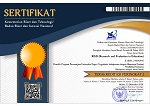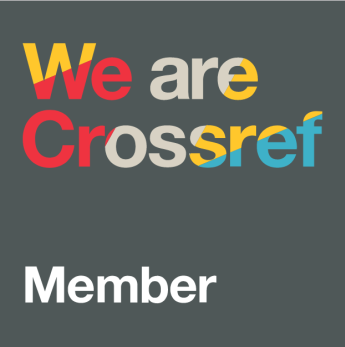The implementation of e-learning with team builder at vocational high schools
DOI:
https://doi.org/10.21831/reid.v1i1.4896Keywords:
implementation, e-learning, team builder, vocational high schoolAbstract
References
AECT Definition and Terminology Committee. (2004, June 1). The meanings of educational technology. Retrieved on 12 April 2013, from http://opaqueshadow.com/reference s/Meanings%20of%20ET_4.0.pdf
Alessi, S. M., & Trollip, S. R. (2001). Multimedia for learning: Methods and development (3rd ed.). Boston: Allyn and Bacon.
Caladine, R. (2008). Foreword. In enhancing e- learning with media-rich content and interactions (3rd ed.). Hershey, USA: Information Science Publishing.
Dale, E. (1954). Audio-visual methods in teaching. New York, NY: Dryden.
IONESCU, A. (2012). New e-learning method using databases. Database Systems Journal, III (2), 35-46. Retrieved February 14, 2013, from http://www.dbjournal.ro/archive/9/ 9_4.pdf
Januszewski, A., & Molenda, M. (2008). Educational technology: A definition with commentary. New York, NY: Lawrence Erlbaum Associates.
Moodle | Moodlerooms. (n.d.). Retrieved October 5, 2012, from Moodlerooms: http://www.moodlerooms.com/reso urces/moodle-resources/
Moodle community. (2012, December 3). Installing moodle. Retrieved December 17, 2012, from MoodleDocs: http://docs.moodle.org/24/en/Insta lling_Moodle
Moodle Statistics. (2013, June). Retrieved June 5, 2013, from Moodle.org: http://moodle.org/stats
Muijs, D., & Reynolds, D. (2005). Effective teaching: Evidence and practice (2nd ed.). London: SAGE Publications Ltd.
Philosophy - MoodleDocs. (n.d.). Retrieved October 6, 2012, from Moodle.org: http://docs.moodle.org/en/Philosop hy
Smaldino, S. E., Lowther, D. L., & Russell, J. D. (2008). Instructional technology and media for learning (9th ed.). New Jersey: Pearson.
Tavangarian, D., Leypold, M. E., Ní¶lting, K., Rí¶ser, M., & Voigt, D. (2004). Is e- learning the solution for individual learning? Electronic Journal of e-Learning, 2(2), pp. 273-280. Retrieved from http://citeseerx.ist.psu.edu/viewdoc/ download?doi=10.1.1.116.8017&rep=rep1&type=pdf
Whyte, C. B. (1989). Student affairs-the future. Journal of College Student Personnel, 30(1), pp. 86-89.
Downloads
Published
How to Cite
Issue
Section
Citation Check
License
The authors submitting a manuscript to this journal agree that, if accepted for publication, copyright publishing of the submission shall be assigned to REID (Research and Evaluation in Education). However, even though the journal asks for a copyright transfer, the authors retain (or are granted back) significant scholarly rights.
The copyright transfer agreement form can be downloaded here: [REID Copyright Transfer Agreement Form]
The copyright form should be signed originally and sent to the Editorial Office through email to reid.ppsuny@uny.ac.id

REID (Research and Evaluation in Education) by http://journal.uny.ac.id/index.php/reid is licensed under a Creative Commons Attribution-ShareAlike 4.0 International License.







.png)





